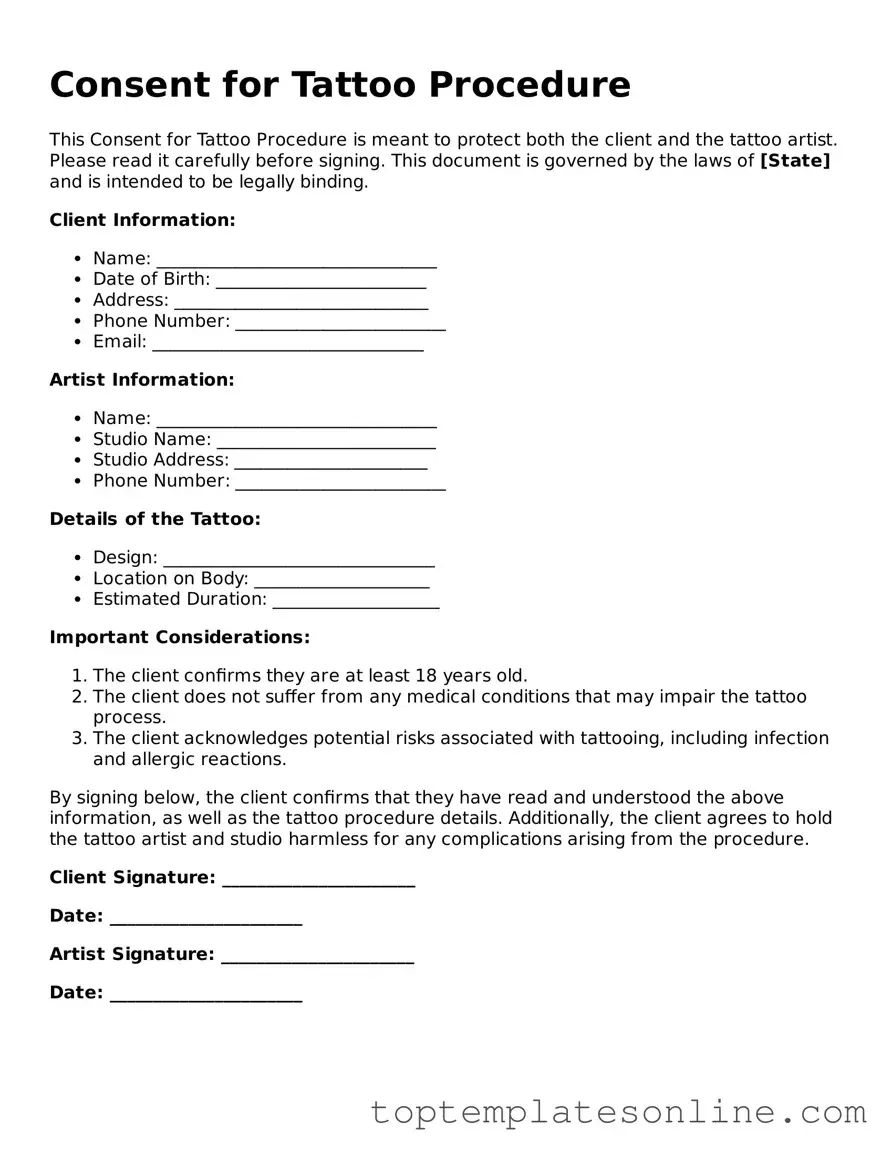Attorney-Approved Tattoo Release Form
The Tattoo Release form is a legal document that grants permission for a tattoo artist to create a tattoo on an individual's body. This form typically outlines the rights and responsibilities of both the artist and the client. It serves to protect the interests of both parties by ensuring informed consent and clarifying ownership of the tattoo design.
Customize Tattoo Release Here
